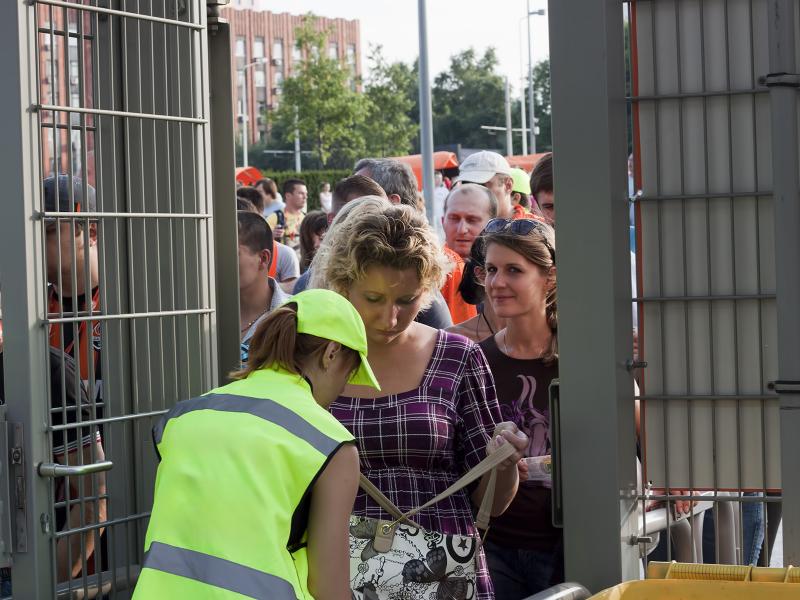
Chemical and
Biothreat Signatures
Pushing the boundaries of
signature discovery
John Cort, a researcher at PNNL, uses nuclear magnetic resonance to look for unique chemical signatures that may help authorities determine the source of a chemical weapon.
(Andrea Starr | Pacific Northwest National Laboratory)
Emerging diseases. Deadly toxins. Illicit contraband. Teams of biologists, chemists, and engineers at Pacific Northwest National Laboratory (PNNL) work every day to solve challenges related to chemical and biological detection and forensics. Through research in biodetection, chemistry, materials, and pathogen characterization, PNNL sits uniquely at the nexus of chemistry and biology, supporting important national security missions to prevent and counter acts of terrorism and the proliferation of weapons of mass destruction.
We use our world-class capabilities in measurement, imaging, and data analytics to identify unique or distinguishing measurements, patterns, or collections of data—known as signatures—within chemicals and biomolecules of national security importance. Our core strength in identifying and characterizing chemical and biothreat signatures enables methods that address national security, environmental, and human health missions. And we routinely customize and implement these methods in operational environments through close interaction with federal, state, and local stakeholders.
We push the boundaries of biomarker and chemical signature discovery with research in toxicology, microbial communities, health physics, and the environmental fate and transport of chemicals and radiochemicals. This research contributes to national security missions in biodefense, infectious disease, and exposure science. We are also developing the emerging technologies poised to meet challenges as biological and chemical threats expand beyond specific, known threats.
Biothreat signatures in pathogen science and detection
Building upon PNNL’s rich history in both chemical and biological signatures science, we use novel chemical approaches to address problems of biological origin. By interfacing disciplines, we are solving a wide range of national security challenges; for instance, we are integrating trace detection methods with modeling and simulation to understand the origin of a sample or material.
Our biological signatures work includes detecting and characterizing genetic material from biological threat agents, emerging diseases, and protein toxins in both fundamental science and applied solutions for national security. Our research objective, BioRisk: Beyond the List, is focused on uncovering the intricacies of biological function so that harmful microbes can be rapidly detected and mitigated. And we characterize biological toxins and human pathogens to determine the chemical and biochemical signatures of methods that can be used to produce biological threat agents—this information is needed to identify the potential origins of a deliberately released threat agent.
Chemical and biothreat signatures for contraband and explosive detection
Similar to our biodetection capabilities, PNNL has extensive expertise in detecting trace and ultra-trace levels of chemicals and radionuclides, which provide insight into the processes used to make chemical weapons. This research is critical to national security because it informs defense strategies and plays a key role in developing some of the world’s most sensitive tools and standards to detect the illegal movement of weapons, drugs, and contraband. We continue to advance the field by investigating ways to apply materials sciences and nanotechnologies to these detection and analysis methods.
research fentanyl and its analogs. This work helps improve detection equipment and standards
used by emergency responders. (Video by Pacific Northwest National Laboratory)
We support the national security of our borders by developing technologies that complement or replace contact and canine-assist detection methods such as sophisticated, non-intrusive portal monitors located at thousands of ports of entry across the United States. In addition, our scientists and engineers are developing methods to detect, intercept, and prevent the threat of explosives through advanced imaging and chemical detection capabilities. Our science-based solutions are used in real-world settings to better distinguish between explosives and benign materials, enabling earlier warnings from increasingly smaller amounts of suspect material.
Ongoing work at PNNL is also driving new detection capabilities, tracing procedures, and chemical standards to deliver more timely and actionable information for emerging chemical threats, such as fentanyl and its analogs. Our multidisciplinary approach supports important national security missions and aims to reduce emergency responders’ chemical exposure.

